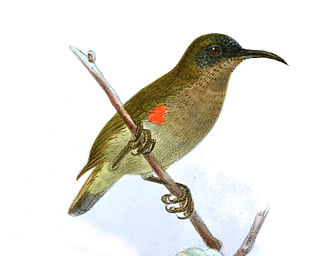
The marbled duck or marbled teal is a medium-sized species of duck from southern Europe, northern Africa, and western and central Asia. The scientific name, Marmaronetta angustirostris, comes from the Greek marmaros, marbled and netta, a duck, and Latin angustus, narrow or small and -rostris billed.

The conservation status of a group of organisms indicates whether the group still exists and how likely the group is to become extinct in the near future. Many factors are taken into account when assessing conservation status: not simply the number of individuals remaining, but the overall increase or decrease in the population over time, breeding success rates, and known threats. Various systems of conservation status are in use at international, multi-country, national and local levels, as well as for consumer use such as sustainable seafood advisory lists and certification. The two international systems are by the International Union for Conservation of Nature (IUCN) and The Convention on International Trade in Endangered Species of Wild Fauna and Flora (CITES).

An IUCN Red List Critically Endangered species is one that has been categorized by the International Union for Conservation of Nature as facing an extremely high risk of extinction in the wild. As of 2021, of the 120,372 species currently tracked by the IUCN, there are 8,404 species that are considered to be Critically Endangered.

The desert rain frog, web-footed rain frog, or Boulenger's short-headed frog is a species of frog in the family Brevicipitidae. It is found in Namibia and South Africa. Its natural habitat is the narrow strip of sandy shores between the sea and the sand dunes. It is threatened by habitat loss by such factors as mining and tourism.

Ursula's sunbird is a species of bird in the family Nectariniidae restricted to the continental and near-shore portions of the Cameroon line.

The Pitt shag, also known as the Pitt Island shag or Featherstone's shag, is a species of bird in the family Phalacrocoracidae. It is endemic to Pitt Island. Its natural habitats are open seas and rocky shores. It is threatened by habitat loss.

The Somali hedgehog is a species of mammal in the family Erinaceidae. It is endemic to Somalia and Somaliland. The Somali hedgehog is nocturnal.

The Saharan shrew is a species of mammal in the family Soricidae. It is found in Mauritania and Morocco. Its natural habitats are rocky areas and sandy shores.

Pilosocereus aureispinus is a species of plant in the family Cactaceae. It is endemic to Brazil. Its natural habitats are dry savanna and rocky areas. It is threatened by habitat loss.

Pilosocereus azulensis is a species of plant in the family Cactaceae. It is endemic to Brazil. Its natural habitat is subtropical or tropical dry forests. It is threatened by habitat loss.

Pilosocereus floccosus is a species of plant in the family Cactaceae. It is endemic to Brazil, in Bahia and Minas Gerais states. Its natural habitats are subtropical or tropical dry forests and rocky areas. It is threatened by habitat loss.

Pilosocereus fulvilanatus is a species of plant in the family Cactaceae. It is endemic to Brazil. Its natural habitats are subtropical or tropical dry forests, subtropical or tropical dry shrubland, and rocky areas. It is threatened by habitat loss.

Pilosocereus glaucochrous is a species of plant in the family Cactaceae. It is endemic to eastern Brazil, in central Bahia state. Its natural habitat is subtropical or tropical dry forests. It is threatened by habitat loss.

Pilosocereus magnificus is a species of plant in the family Cactaceae. It is endemic to Brazil, within Minas Gerais state. Its natural habitats are subtropical or tropical dry forests, subtropical or tropical dry shrubland, and rocky areas. It is threatened by habitat loss.

Pilosocereus multicostatus is a species of plant in the family Cactaceae. It is endemic to Brazil, in northern Minas Gerais state. Its natural habitat are rocky areas. It is threatened by habitat loss.

Pilosocereus piauhyensis is a species of plant in the family Cactaceae. It is endemic to Brazil, in the states of Piauí, Ceará, and Rio Grande do Norte. Its natural habitat is rocky areas.

Pilosocereus royenii is a species of cactus found throughout the West Indies and the states of Yucatán and Quintana Roo in Mexico. Common names include Royen's tree cactus, dildo cactus, and pipe organ cactus. It is composed of multiple long, tubular shaped branches, each ribbed with multiple sections and sharp spines.

Pilosocereus robinii is a species of cactus known by the common name Key tree-cactus. It is native to the Florida Keys in the United States. It also occurs in Western Cuba and the Northern Bahamas. It has been erroneously reported from Puerto Rico, the Virgin Islands, and Mexico. It is a rare species which is threatened by the loss of its habitat. It is a federally listed endangered species of the United States.

Pilosocereus catingicola is a flowering plant in the family Cactaceae that is endemic in northeastern Brazilian states of Rio Grande do Norte, Pernambuco, Alagoas, Sergipe, Paraíba, Bahia.

Pilosocereus auristetus is a species of cactus native to Minas Gerais, Brazil and was first described in 1957.




















